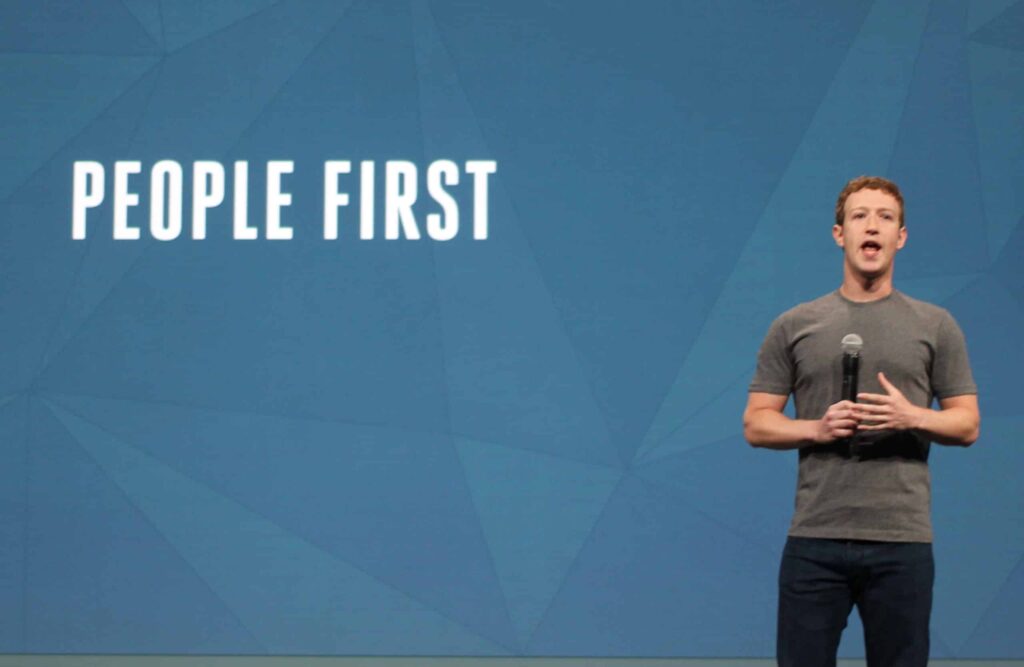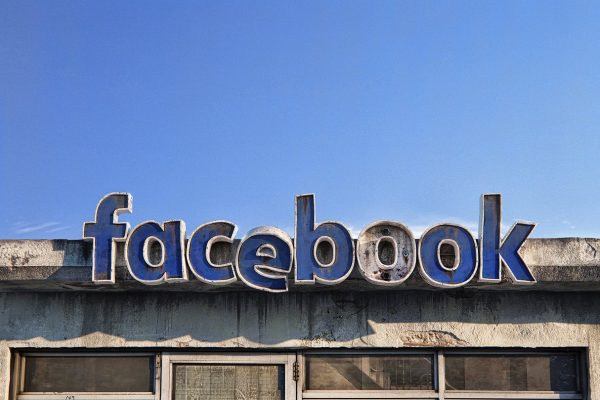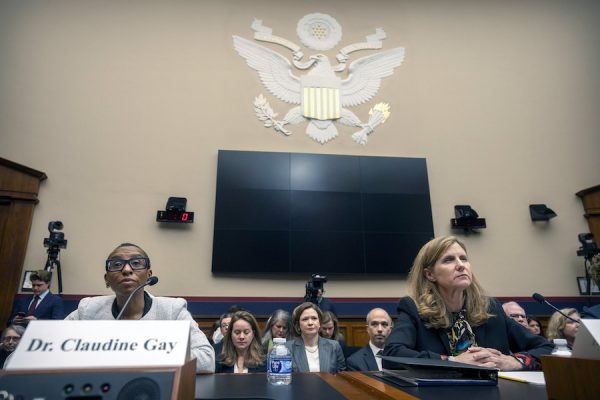Breaking up dominant digital corporations is moving from the realm of theory to probability. In January a federal judge denied Facebook’s motion to dismiss the Federal Trade Commission’s amended complaint seeking to force the company to sell off Instagram and WhatsApp. Congress may restructure these companies through new law, with pro-big business Republicans joining Democrats in the fight to control the power of Amazon, Facebook, and Google. A direct attack on the size of these companies would complement and reinforce new legislation and regulation governing their business practices. The increasing possibility of corporate breakups has triggered warnings from tech companies and their lobbyists of the supposed dangers to the public if very large companies are made smaller through litigation and legislation.
The New Deal-era restructuring of the electric power industry should steel the resolve of regulators and lawmakers fighting to breakup tech giants today. In the 1920s electric utilities offered a new and exciting form of energy and became arguably the most powerful industry in the United States at the time. They got their way in Congress, state legislatures, and with regulators, undertaking a systematic propaganda campaign to maintain their political economic dominance and discredit alternative arrangements, such as public ownership. Yet the federal government tamed them. Overcoming massive opposition from the power industry and its allies, the Roosevelt administration and progressives in Congress split up nation-spanning utility holding companies and brought them and their subsidiaries under effective federal and state regulation. This history offers several lessons for splitting up tech corporations today, both on the political fight ahead and the probable public benefits of the breakups.
The hegemony of utility holding companies
In the 1920s electricity was still a relatively novel technology and a source of public fascination. Though Charles Brush, Thomas Edison, and others had developed electricity for lighting and power in the late nineteenth century, it only became a common service for urban residents in the twentieth century. (The vast majority of farmers and other rural residents had to wait for the New Deal to get electric service.) Electric lighting replaced smoky, dangerous candles and kerosene lamps and offered, at least for more affluent households, labor-saving conveniences such as indoor refrigeration, vacuum cleaners, and washing machines.
Electric service was provided to most Americans not by firms in textbook “competitive markets” but by monopolistic private power companies regulated by state public service commissions. The construction and operation of parallel transmission and distribution lines produced wasteful duplication of infrastructure and resulted in ruinous competition in which rival power companies charged such low rates that they were unable to service their debts. To prevent this, state regulators granted exclusive franchises to power companies over a designated territory and, in return for this monopolistic privilege, regulated their rates and other terms of service. Under this system that aimed to balance the interests of consumers and investors, state regulators, in theory, set rates that allowed power companies to recover their operating expenses and capital investments, and to obtain a fair return on these investments.
Although the sector was formally governed at the state and local level, in many instances holding companies—which did not own power systems directly, but instead owned the stock of power companies—wielded actual control. In the ’20s utility holding companies, or “the power trust” according to critics, had acquired the stock of hundreds of local electric companies and dictated their policies and practices. Ten systems dominated the national power industry by 1930.
Holding companies concentrated hands in the power of an elite few. A modest investment could translate into control over a vast utility empire: an individual with a small equity stake in a holding company could run many corporations through the practice of pyramiding, where a series of holding companies were stacked on top of each other. Executives such as Samuel Insull of Middle West Utilities Co., Commonwealth Edison, and other entities (collectively the Insull group); Henry Doherty of Cities Service Co.; and Sidney Mitchell of the Electric Bond & Share Co. sat atop the power industry.
One extreme case illustrates how control was concentrated through financial engineering. Howard Hopson and John Mange of the Associated Gas & Electric Co. (composed of 300-400 separate corporations) owned equity in the top company worth approximately $300,000. Through pyramiding, highly fragmented ownership of voting stock, and the issuance of large quantities of debt and non-voting stock, they controlled utilities valued at nearly $1 billion.
Some holding companies owned power systems scattered across the nation. For instance, the Electric Bond & Share Co. controlled properties in the Pacific Northwest, Mountain West, Texas, Florida, as well as two strips of systems running west to east from Indiana to New Jersey and north to south from Ohio to South Carolina. These holding companies could not plausibly claim their size contributed to economies of scale or other productive advantages. As one economist wrote, such entities constituted a “helter-skelter formation of systems of poorly integrated properties in defiance of all principles of engineering technique and operating efficiency” that produced a map “gerrymandered in a way which would surprise and delight the eyes of a political boss.”
Holding companies also undercut the promise of affordable electric service through state regulation. Unlike power companies that directly provided electricity to customers, holding companies—removed from the everyday operation of power systems and often incorporated in another state—were not subject to state oversight. Holding companies provided services such as construction, financing, and management to their power company affiliates at inflated prices. State regulators could not review the cost bases for the contracts or modify them, yet still passed along the service fees to customers in the form of higher rates to preserve the solvency of power companies. Through these intercorporate service contracts, holding companies “effectively neutralized the power of the state regulatory commissions.”
Given these extraordinarily attractive arrangements for executives and financiers, the industry—holding companies, their subsidiaries, and utility trade associations—fought to maintain the status quo through a massive propaganda campaign. In addition to defending private control of the sector on constitutional, economic, and philosophical grounds, they also attacked proposals for, and proponents of, public generation and distribution of power—whether done by the federal government or municipalities. Private power companies spent immense amounts of money on publicity in the media, circulating ghostwritten op-eds, “educating” teachers in primary and secondary schools, and reviewing school and college textbooks for “radical” material. In a report on the industry’s public relations, the FTC described the undertaking in superlative terms: “[N]o campaign approaching it in magnitude has ever been conducted except possibly by governments in war time.”
The federal government tames utility holding companies
After the 1929 crash, the era of holding company hegemony started to unravel. Although electric sales declined only modestly, holding companies were made vulnerable by their heavy reliance on debt financing. Leverage, while attractive in boom times, created financial precarity. Even a small reduction in revenues for power companies could cascade upward into insolvency: the holding companies stacked above did not receive enough dividends from power profits below to meet their obligations to creditors. Some tumbled into bankruptcy while others teetered on the edge.
The most spectacular case was the collapse of the Insull group in 1932. Samuel Insull, who had once served as Thomas Edison’s personal assistant and whose name had been synonymous with the power industry for decades, fled the country to escape prosecution and was thoroughly discredited, though he was ultimately acquitted of criminal fraud by a Chicago jury.
The second blow to holding company dominance came with the 1932 presidential election of Franklin D. Roosevelt, along with the election of many progressives to Congress. Roosevelt was keenly interested in power policy both before and during his presidency. In a September 1932 campaign speech in Portland, Oregon, he condemned the power trust—including “the Insull monstrosity”—for cheating innocent customers and ordinary investors and called for federal supervision of these corporations. Following his inauguration in March 1933, Roosevelt and Congress pursued an ambitious power agenda. Within his first 100 days they had created the Tennessee Valley Authority (TVA) to build dams in the Tennessee River watershed for flood control, navigation, and power generation, and to promote development in one of the poorest parts of the country.
In 1935 the Roosevelt administration and allies in Congress turned their attention to the holding companies. In his State of the Union address that year, President Roosevelt called for “the abolition of the evil of holding companies.” (In condemning holding companies as a class, Roosevelt inadvertently went beyond his written address, which said “the evil features of holding companies.”) In February Representative Sam Rayburn and Senator Burton K. Wheeler introduced the Public Utility Holding Company Act or PUHCA, which the White House had drafted to regulate the accounting practices, acquisitions, and securities issuances of holding companies.
Most notably, Section 11 of the bill would simplify and shrink holding companies. The drafters of PUHCA did not believe that breaking companies up would be a panacea for what ailed the power sector, and instead preferred regulation and restructuring. The proposed breakups would ensure that federal and state regulators could effectively control holding company practices and rates. Holding company advocates called Section 11 the “death sentence,” implying that the law would abolish electric companies instead of merely splitting up large holdings and reconstructing their complicated legal structures.
The holding companies and affiliates launched a multi-pronged campaign to stop the bill, taking specific aim at killing Section 11. Undertaking a massive lobbying effort in Washington, D.C., they initiated a “grassroots” campaign that sent tens of thousands of fake citizen telegrams opposing PUHCA to members of Congress. Supporters of PUHCA were accused of ignoring the plight of “widows and orphans” (who supposedly owned the securities of holding companies), seeking to make the industry less efficient, and aspiring to “socialize” the economy.
After a series of defeats for the champions of PUHCA in the House in the spring and early summer of 1935, the bill appeared to be in trouble. But an investigation led by Senator (and future Supreme Court Justice) Hugo Black uncovered the questionable and even illegal methods the industry had used to stop PUHCA, helping turn the political tides in favor of the law’s supporters. The two houses of Congress reached a compromise in August that generally limited holding companies to “one integrated system” and delegated power to the Securities and Exchange Commission (SEC) to simplify and break them up.
The fight did not end when President Roosevelt signed PUHCA into law on August 26, 1935. Instead, holding companies shifted their anti-PUHCA campaign to the administrative and judicial fields, collectively refusing to register with the SEC, as required by PUHCA, and seeking to invalidate the law in court on constitutional grounds. Whether PUHCA would remain the law of the land and be enforced remained uncertain for years.
Over the course of a decade, however, the SEC successfully defended the law against challenges and implemented it, including Section 11. Through voluntary and mandated restructuring plans, the SEC broke up holding companies spanning the whole country. At the same time, it encouraged the growth of integrated and interconnected systems that could improve operations and lower costs, such as a single power company for an entire metropolitan area in place of a patchwork of small systems. The SEC also abolished the holding companies that featured more than two corporate layers and had concentrated power in the hands of a small clique of executives at the top. Paired with reforms to the utility regulatory enterprise and the development of public power projects such as the TVA, PUHCA helped usher in a “golden age” of steadily declining rates and rising consumption of power that lasted until the 1970s energy crisis.
Notably, even the owners of utilities securities benefited from PUHCA. With the SEC reorganizing holding companies under PUHCA, many shareholders received common stock with voting rights in place of the non-voting stock they held. The implementation of PUHCA also put utilities on firmer financial footing by stripping them of excess debt and eliminating byzantine corporate structures.
PUHCA indirectly promoted public ownership, too. In Nebraska and Washington State, which had strong public power laws and movements, holding companies sold affiliates to community-owned utilities. For instance, the SEC ordered the dissolution of the American Power & Light Co. (a holding company) and the sale of its Nebraska Power Company subsidiary, which the city of Omaha purchased in 1946. Soon after, Nebraska became the only state where all power companies are owned by residents (through cooperatives, municipal utilities, or public power districts), a fact that remains true to this day.
Learning from the successes of PUHCA
This history provides three significant lessons for today’s fight against Big Tech. First, congressional and administrative supporters of breaking up big tech will face massive resistance from industry and must be prepared to meet and overcome the opposition through determination, ingenuity, cooperation with allies outside of the Capitol and the White House, and support from the public.
Second, as with the holding companies, Congress and regulators should treat the public benefits of current corporate gigantism with skepticism and place the burden of proof for such claims with the dominant corporations. The contemplated breakups are not about atomizing large corporations into miniscule enterprises or disregarding the benefits of scale, but rather prying markets free from a single firm’s control.
Third, breakups are not a substitute for regulating the conduct of big tech companies. Simply creating smaller business units will not automatically yield the type of competition that elected officials or the public want. Businesses compete through a variety of means, some salutary and some pernicious. They can aim to obtain an advantage over rivals by making better products and offering better prices, but also by engaging in deceptive advertising and paying their workers subminimum wages.
Competition is not always good. For instance, Uber has out-competed traditional taxi companies by misclassifying its workers as independent contractors, flouting municipal cab rules, and losing billions of dollars year after year. In contrast to the gig corporations’ destructive competition, the ongoing rivalry among fast-food employers to attract and retain workers—which contributed to a 11.2 percent annual increase last month in hourly wages in the leisure and hospitality sector—is positive.
Among the corporate breakups that could happen in tech, a future court-ordered divestiture of Instagram and WhatsApp by Facebook is not guaranteed to yield desirable forms of competition. Indeed, it could unleash even broader and deeper surveillance as Facebook and an independent Instagram compete to attract advertisers to their platforms with promises of even more precise targeting of users. If Congress or the Federal Trade Commission want to restrict surveillance advertising, they should do that directly instead of presuming that future rivalry between Facebook and Instagram alone will produce greater protection of user privacy.
Legislators and other policymakers should build on existing norms of unfair competition and prohibit types of business rivalry they believe hurt consumers, workers, suppliers, and rivals. In other words, they should structure economic competition and markets in accordance with public values.
Nonetheless, breakups are critical on at least two grounds.
In testimony before the House of Representatives last year, Judge Diane Wood stated that “without competitors, there will be no competition.” Even if Congress and agencies prohibit certain forms of unfair competition, they cannot conjure up beneficial forms of competition in monopolistic markets, especially markets in which incumbents enjoy the protection of large network effects. Without a serious search rival, how much motivation does Google have to improve its search results and interface? In the absence of effective competitors, the quality of Google search appears to have steadily declined, including through the proliferation of often unwanted ads. So long as Amazon dominates e-commerce, will it feel much pressure to reduce commissions and improve other terms for its millions of sellers? Paired with rules on unfair competition, breakups of dominant tech corporations can ensure business rivalry that confers benefits on consumers, workers, and suppliers.
Great size also means great power: Amazon exercises power up its supply chain to the detriment of manufacturers and their workers, while Facebook and Google wield outsized clout over advertisers.
Further, a corporation that owns dozens of plants and facilities across the United States is well positioned to thwart labor organizing. Large corporations today, in the words of labor lawyer Brandon Magner, “disperse their production without dispersing their power.” Under current American labor law, unions can only be formed at the establishment level. For example, Amazon warehouse workers would have to organize the company one warehouse at a time. With its concentration of power but decentralization of operations, a firm like Amazon can reallocate work away from warehouses with unions or even nascent signs of union activity and toward warehouses with more quiescent workforces.
This is not a new fear. In 1920 the Interchurch World Movement attributed the failure of workers to organize U.S. Steel to the corporation’s enormous size:
The first cause of failure was the size of the Steel Corporation. . . . It had too large a cash surplus, too many allies among other businesses, too much support from government officers, local and national, too strong influence with social institutions such as the press and the pulpit, it spread over too much of the earth—still retaining absolutely centralized control—to be defeated by widely scattered workers of many minds, many fears, varying states of pocketbook and under a comparatively improvised leadership.
Giant corporations—specifically their controlling shareholders and top executives—wield extraordinary power in society. They can use their command of economic resources to shape the course of political campaigns, fund favorable media coverage, sponsor sympathetic scholarship, and decide which cities and regions thrive. The utility holding companies did this in the 1920s and ’30s and Big Tech companies do this today.
Lord John Browne, the former CEO of BP, candidly told the Wall Street Journal in 2003: “We do get the seat at the table because of our scope and scale. Whether we are the second or the third largest (oil) company is of very little import, but we’re certainly up there and we operate in places which are important to the United States government, and the United States government is important to us.”
Jeff Bezos exercised the power that comes with scope and scale in a particularly brazen fashion in 2017 when he invited states and cities to compete to host Amazon’s second headquarters. Municipal and state governments offered Amazon lavish incentives with the aim of attracting “HQ2” and the associated jobs and tax revenues. This frenzy to entice one of the world’s richest men took a particularly embarrassing turn when New York Governor Andrew Cuomo jokingly offered to rename himself Amazon Cuomo if Bezos selected New York for the second headquarters. With elected officials supplicating before Bezos, democracy certainly seemed subordinate to great wealth.
Breakups of tech giants can produce a more equitable society. In conjunction with laws on unfair conduct, splitting up dominant digital firms can spur socially beneficial forms of business rivalry. It can also reduce the extreme inequality between corporate executives and controlling shareholders, on the one hand, and workers and government, on the other. To be sure, corporate restructurings are not a cure-all for the ills of neoliberal capitalism, and their benefits should not be oversold. Still, breakups would diminish the absolute might of any single tech corporation and tilt the balance of power from oligarchs to ordinary Americans.









